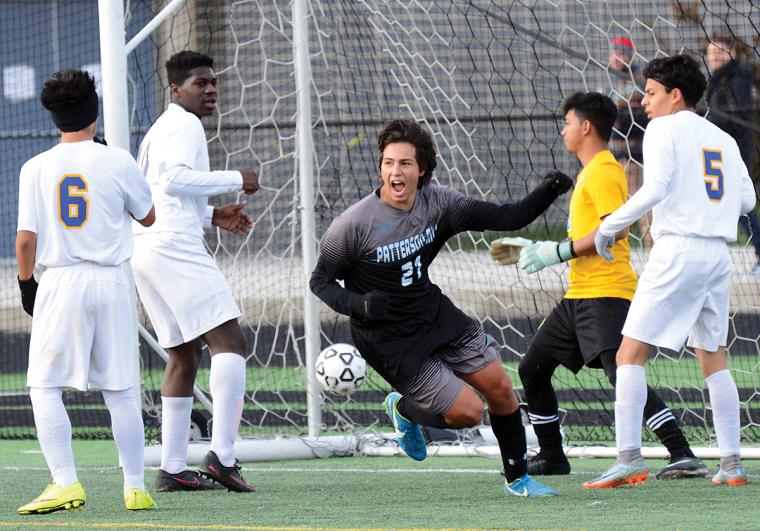

As someone who has been photographing youth sports for years, I have some tips to share when it comes to making this decision. As a side note, this article isn’t intended to teach anyone to be a sports photographer; it’s meant to show you the important points to consider when you’re selecting one.
Make sure the prospective photographer is a professional: All too often, someone will say, ‘Oh, my nephew is a good photographer/has a good camera/loves to take pictures of sports.’ That’s not really a recommendation you should follow if you’re interested in getting the best possible results.
The equipment does not make the photographer: Professional photographers will often hear, ‘If I had a camera like yours, I could do that.’ The camera is just a tool and there is a level of expertise that goes into taking professional photos. Anyone can use a point-and-shoot, but they won’t get the same results a professional will.
 Not all photographers, even professionals, have the same skill set: A wedding photographer, however good, is not necessarily a sports photographer, and may not even have the equipment to be one. Each sport comes with its own set of challenges; it may be the lighting, the angle you can shoot from, the speed at which the sport moves, the distance you’re required to be from the athletes or a combination of those things. Sports photographers understand sports and how they move, which in turn enables them to get better photos. If you’re looking for a photographer, you need to see if the person can do that specific type of photography. Ask to see examples of their work pertaining not just to sports but to that particular sport. Is it lacrosse? Is it cheerleading? Is it swimming? Is it something else?
Not all photographers, even professionals, have the same skill set: A wedding photographer, however good, is not necessarily a sports photographer, and may not even have the equipment to be one. Each sport comes with its own set of challenges; it may be the lighting, the angle you can shoot from, the speed at which the sport moves, the distance you’re required to be from the athletes or a combination of those things. Sports photographers understand sports and how they move, which in turn enables them to get better photos. If you’re looking for a photographer, you need to see if the person can do that specific type of photography. Ask to see examples of their work pertaining not just to sports but to that particular sport. Is it lacrosse? Is it cheerleading? Is it swimming? Is it something else?
Ask for specifics: Don’t be afraid to ask for estimates and for details. What does the photographer charge? What is his or her timeline for getting images to you? How will those images be delivered? All these answers should be factored into your final choice.
Communication is key: When I am photographing an event, I like to go in with a short list the client has provided in advance. This should contain specific types of shots the client is looking for: action shots of play, posed shots of the team afterward, shots of the sponsors, crowd reactions, etc. Don’t automatically assume the photographer will be sending the photos you want; put it in writing. No photographer can read your mind. Even if you’re there on site for the game, you may not have time to provide this information. This is true in all types and disciplines of photography; in a wedding, for example, someone might really have wanted a picture of Aunt Marion and Uncle Joe but didn’t tell the photographer beforehand, much less point them out – and as a result, that picture isn’t in the album and the family is disappointed.
 Make sure your photographer has clearance to be where he or she needs to be: Generally, the closer we can get, the better the photos are going to be. Make sure your photographer has appropriate media credentials to differentiate him or her from anyone who just wants to take a picture. Having said that, you also need to communicate in advance with the officials at your event. Most are used to seeing photographers but not all of them feel the same way about it. Some don’t care where we are, some get mad if we’re in a specific area – the goal lines, for example – and some don’t want us around at all. The planner needs to speak to officials well before play starts and needs to let them know who the official photographer is as well as the kind of access they need. Which brings us to another point…
Make sure your photographer has clearance to be where he or she needs to be: Generally, the closer we can get, the better the photos are going to be. Make sure your photographer has appropriate media credentials to differentiate him or her from anyone who just wants to take a picture. Having said that, you also need to communicate in advance with the officials at your event. Most are used to seeing photographers but not all of them feel the same way about it. Some don’t care where we are, some get mad if we’re in a specific area – the goal lines, for example – and some don’t want us around at all. The planner needs to speak to officials well before play starts and needs to let them know who the official photographer is as well as the kind of access they need. Which brings us to another point…
Keeping parents in the spectator area: Every parent in the world has an iPhone and wants to document their kids’ accomplishments on the field and immediately post them to social media. This means they will often try to run down to the sidelines to take photos. Parents, however, should be relegated to the stands and the coordinator of the event needs to be in charge of crowd control. This may mean making announcements that spectators are not allowed outside of the stands. Once the game is finished and the students are posing as a team, I’ll take my shots, then I like to back up and get a picture of all the parents rushing in to take their own pictures.
 Understand you need to pay for the photographer’s time (and that means all of it): Generally, photographers charge by the hour. The hourly rate will differ, depending on where you are geographically – and on the photographer – but in general, I’d say you could expect to pay a minimum of $175 to $250 an hour. The photographer also will spend extensive time color correcting and editing images back at his or her office after the event, so you have to make sure to factor in those costs. Again, communicate with any prospective photographer and ask how much time they expect to be putting in, both before and after the event.
Understand you need to pay for the photographer’s time (and that means all of it): Generally, photographers charge by the hour. The hourly rate will differ, depending on where you are geographically – and on the photographer – but in general, I’d say you could expect to pay a minimum of $175 to $250 an hour. The photographer also will spend extensive time color correcting and editing images back at his or her office after the event, so you have to make sure to factor in those costs. Again, communicate with any prospective photographer and ask how much time they expect to be putting in, both before and after the event.
People often ask us why we spend so much time working on photos afterward. The number-one reason is the lighting of sports events. Indoor lighting, for example, is very inconsistent in terms of color. There may be less of an issue outdoors, depending upon the time of day, but even then, you may have to worry about dark shadows on the field.
Earlier, I noted that some sports are harder to photograph than others. Here are some examples and reasons. Cheerleading is a challenge because those competitions are always held indoors (where, as I’ve noted, lighting is inconsistent). The action is frenetic and performances last about two-and-a-half minutes. (I don’t shoot a lot of gymnastics for the same reason; I imagine that would be equally challenging, plus using a flash is taboo in those competitions.) Swimming is also a challenge to photograph because it’s a winter sport which means I am coming from outside into what are essentially tropical conditions and I have to allow about 20 minutes for my gear to stop fogging up.

Understand the legalities of professional photography: The photographer maintains the copyright and ownership of the photos. The client buys user rights to them. Let the photographer know how you plan to use the photos: on a website, in promotions for next year’s event, etc. This can affect the final price. The one thing no photographer wants is someone else trying to sell his or her photos for a profit.
…And the technicalities as well: If the event manager does plan to share images on social media, they need to say that in advance. My cameras, for example, are not Wi-Fi compatible (many newer cameras on the market are), so I would need to bring additional equipment to make my images available instantly. If you anticipate needing images immediately for posting, that’s something you’ll have to make clear to any pros
pective photographer.
Getting the right photographer means starting in advance: Don’t put off this decision-making process or you may get someone who can’t give you the shots you need. Good professionals book up early.
A good photographer can provide you with images that not only capture the action but the emotion of a competition. Ask the right questions, know what you’re looking for and communicate well and you’re sure to come out with a good result. SDM

